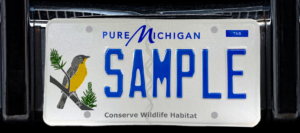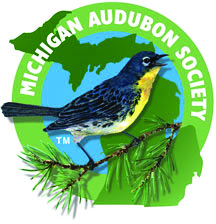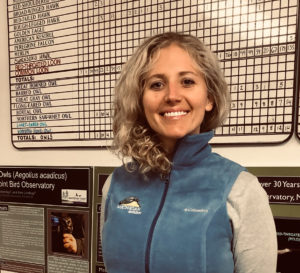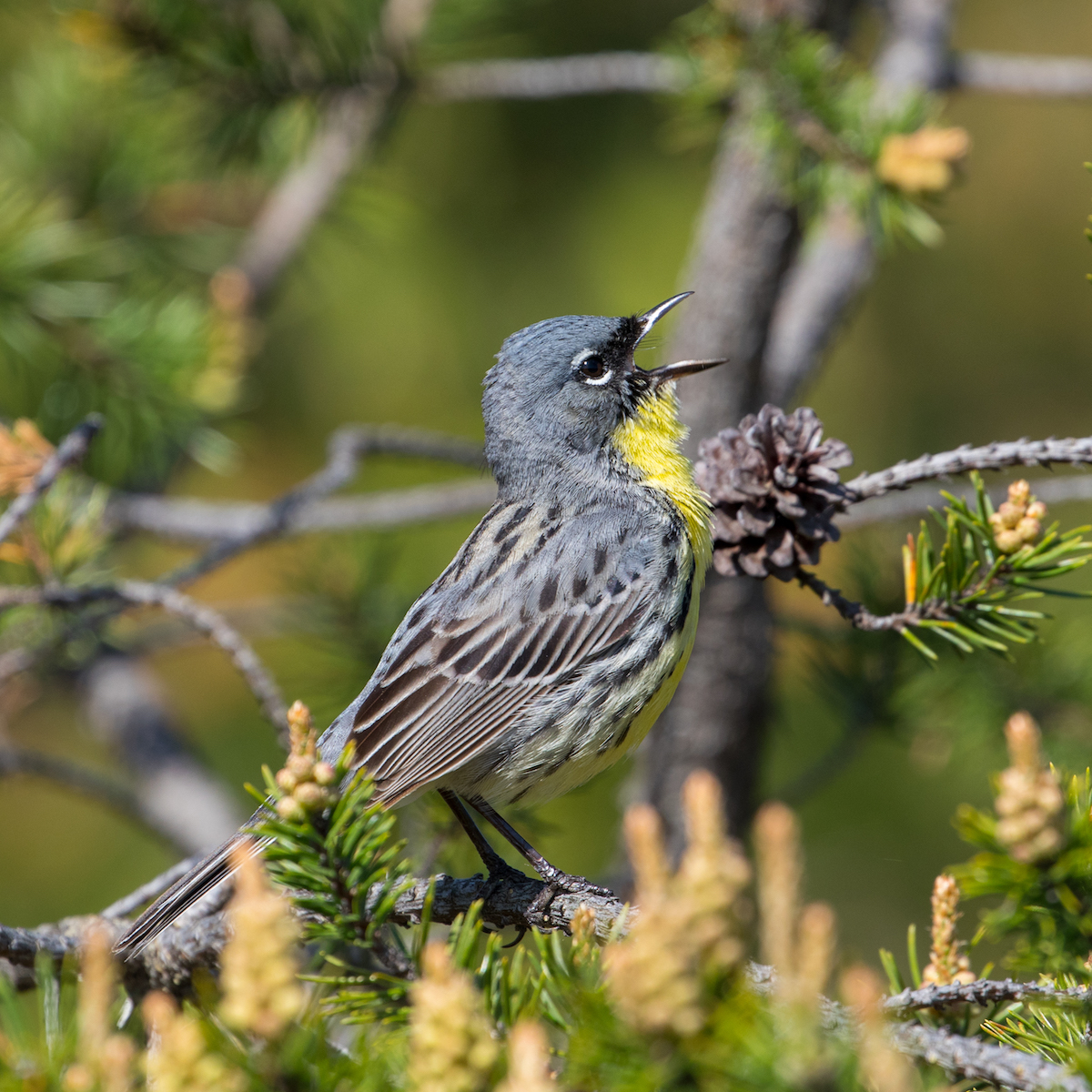
A Michigan license plate featuring the Kirtland’s Warbler will become available in 2022 for those who want to support conservation throughout the state.
In January 2022, drivers with vehicles registered in Michigan can purchase a wildlife habitat license plate featuring a new species. The species selected by the DNR to represent nongame wildlife in Michigan on the habitat plate this time? The Kirtland’s Warbler, that gray and yellow, medium-sized warbler that gets so much press — and for a good reason.
Removed from the federal endangered species list in October 2019, the Kirtland’s Warbler’s conservation success story is no small feat. The state’s selection of this species on the nongame wildlife plate is a testament to its symbolic, history-rich story of bouncing back.
The Kirtland’s Warbler is a long-standing symbol of conservation unique to Michigan in many ways. It was through the strategic stewardship of the Michigan DNR, the U.S. Forest Service, and the U.S. Fish and Wildlife Service that a network of nonprofit organizations and private citizens was created to essentially prevent the Kirtland’s Warbler’s extinction. From 400 to 4,000 individuals, it took a true avian preservation village to pursue the KIWA’s recovery.
We’ve learned a lot from this single species, perhaps most remarkably the importance of human partnerships and participation in the conservation process in order to ensure it is successful and sustainable. The work of conserving birds certainly transcends political and geographical boundaries when we think about their nesting versus breeding grounds and how each of those habitats may be impacted, threatened, or diminishing. In its illustrative story, the Kirtland’s Warbler demonstrates what can happen when we work internationally on collaborative, innovative, multi-faceted solutions to native species recovery and stability. This rings especially true as we mitigate the effects of climate change and digest content about the state of the world’s birds and the staggering statistics about habitat loss. This license plate is one small step of progress and change that is also a well-earned celebration.
The selection of the Kirtland’s Warbler for this purpose has geographical relevance to the state, as this small warbler nests in northern Michigan’s jack pine forests. It is estimated that now, over 95% of the Kirtland’s Warbler population nests in five counties of Michigan’s northern Lower Peninsula. Small populations of these birds can also be found in the U.P., Wisconsin, and Ontario. The Kirtland’s Warbler winters in The Bahamas, a country that was a vital ingredient and active participant in the conservation work that earned this bird its status to date.
This specialty plate costs $35, with $25 of proceeds supporting Michigan’s Nongame Fish and Wildlife Trust Fund. Since its inception, the wildlife habitat license plate has raised over $3.9 million for this fund, which is used solely for the research and management of nongame fish and wildlife as well as for designated endangered animal and plant species in the state of Michigan.
Nongame species are wildlife species that are not usually “taken” for sport, fur, or other forms of human consumption.
The Common Loon, another beloved avian species to many, was the first species featured on Michigan’s nongame license plate when it became available in 2006. In December 2017, the nongame plate featured an elk, purportedly to mark the 2018 celebration of 100 years of elk presence in our state.
Michigan Audubon and the Kirtland’s Warbler Alliance encourage every Michigan driver to purchase the plate and support our state’s capacity for nongame wildlife conservation.
 Michigan Audubon has contributed to Kirtland’s Warbler conservation, collaboration, tours, and management in many ways throughout history, which makes this event of relevance to a great many volunteers, members, donors, tour guides, and former board members who helped make this happen. If you have had a hand in the conservation, education, and research to support the Kirtland’s Warbler, we thank you!
Michigan Audubon has contributed to Kirtland’s Warbler conservation, collaboration, tours, and management in many ways throughout history, which makes this event of relevance to a great many volunteers, members, donors, tour guides, and former board members who helped make this happen. If you have had a hand in the conservation, education, and research to support the Kirtland’s Warbler, we thank you!
Habitat Matters.
Kirtland’s Warblers nest on the ground under the overlapping branches of young jack pine trees. Historically, the warbler’s breeding habitat was created by wildfire sweeping across the landscape, burning mature trees, and opening new areas for young trees to grow. But with more humans living near jack pine habitat starting in the early 20th century, fires became viewed as a threat and were extinguished. With young jack pine habitat becoming increasingly rare, the warbler went into a long, slow population decline until the 1980s, when humans began to harvest large areas of mature forests and replant them with young trees.
The Kirtland’s Warbler is just one of the species that benefits from management of the jack pine ecosystem. Game species such as white-tailed deer, wild turkey, and snowshoe hare use the young jack pine habitat extensively. Jack pine management also helps to support the threatened Hill’s thistle (a plant) and the secretive locust (an insect).
~ by Heather Good, Michigan Audubon executive director
Featured photo: Kirtland’s Warbler by Sherman Garnett

Heather Good has been the executive director of Michigan Audubon since 2016 and focused on environmental policy in her Environmental Studies education at Western Michigan University. She works with Michigan Audubon’s chapters, local groups, legislators, and individual volunteers to advocate for the conservation and best practices and policies for birds and their habitats in the state of Michigan.
This article appeared in the 2022 Winter Jack Pine Warbler.

